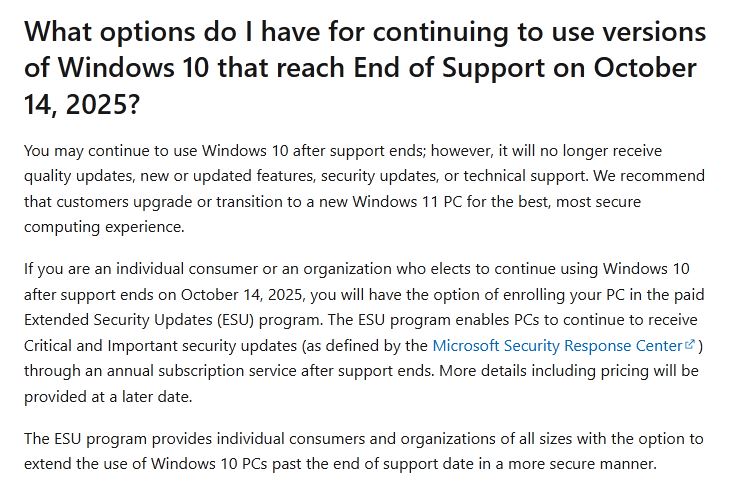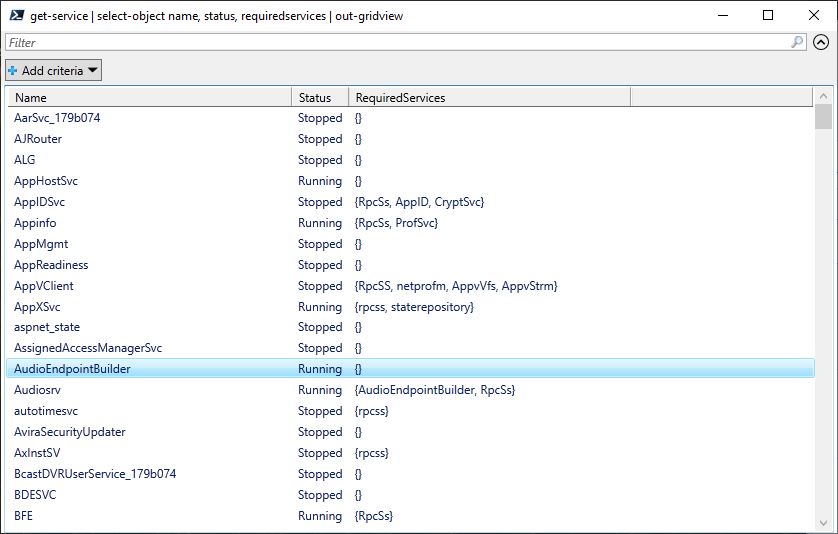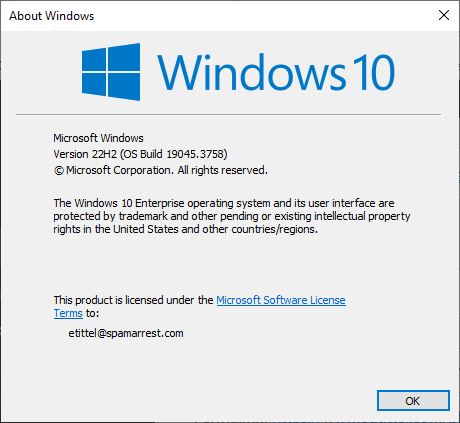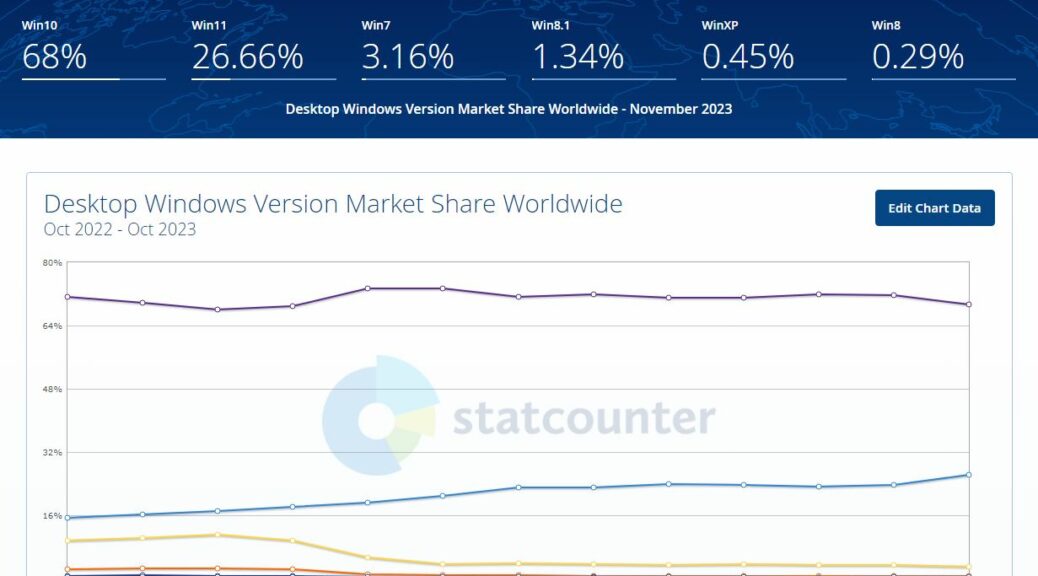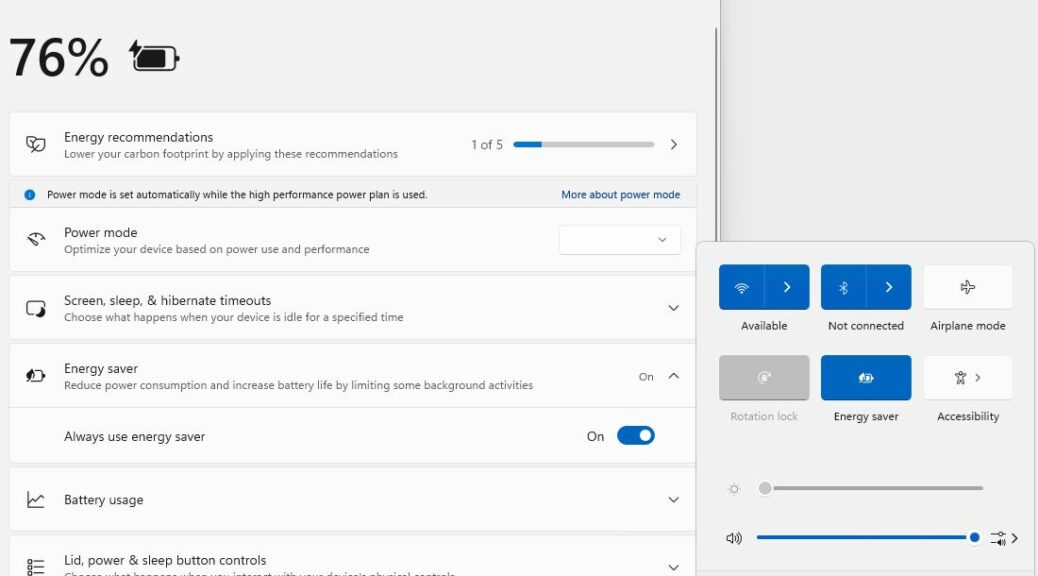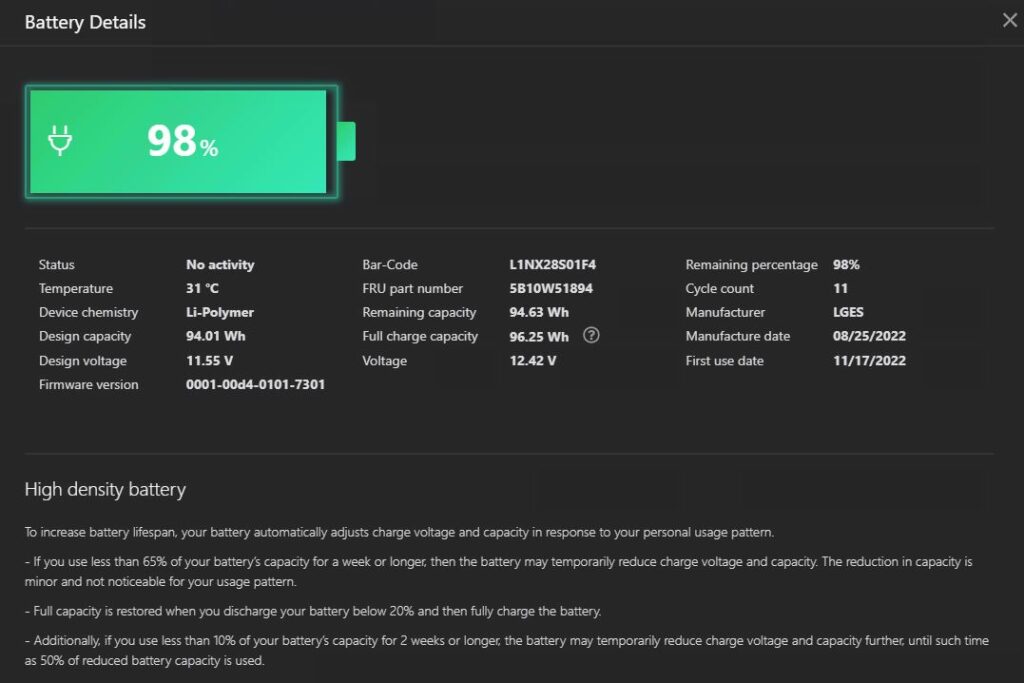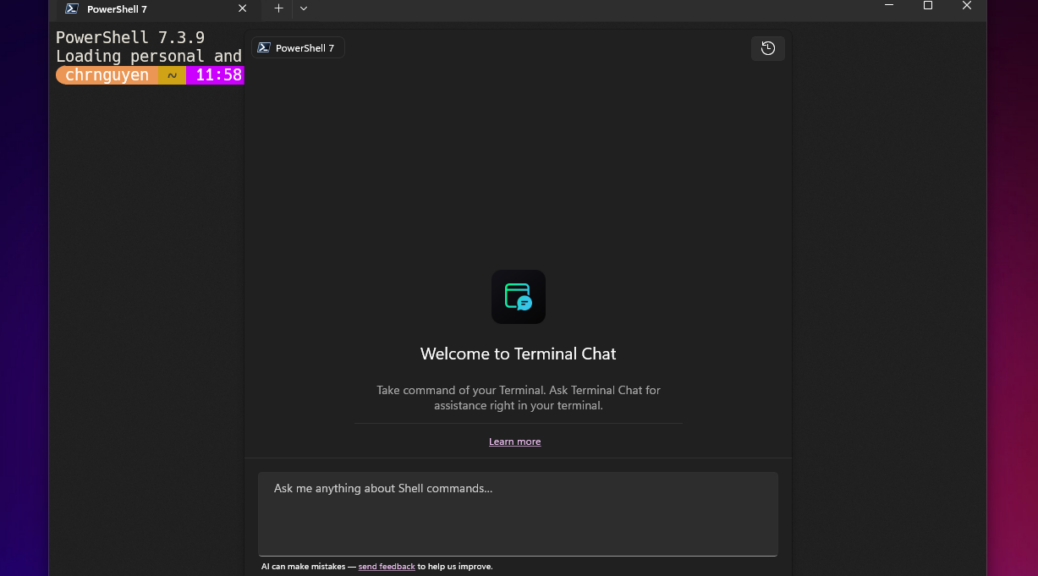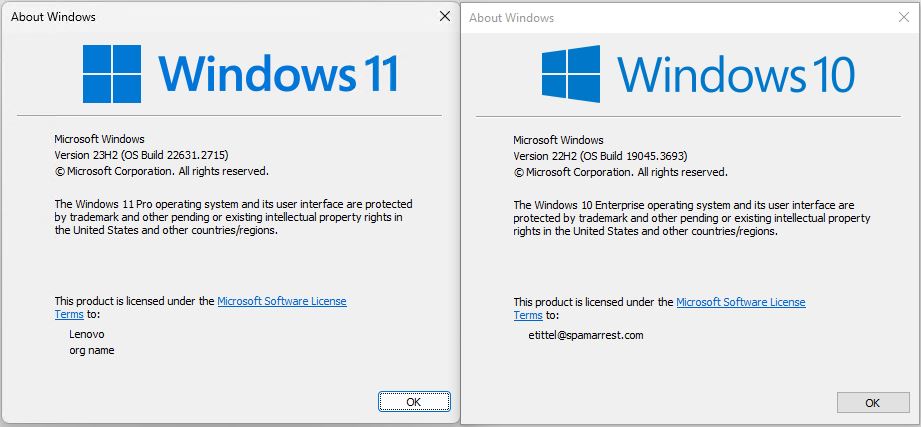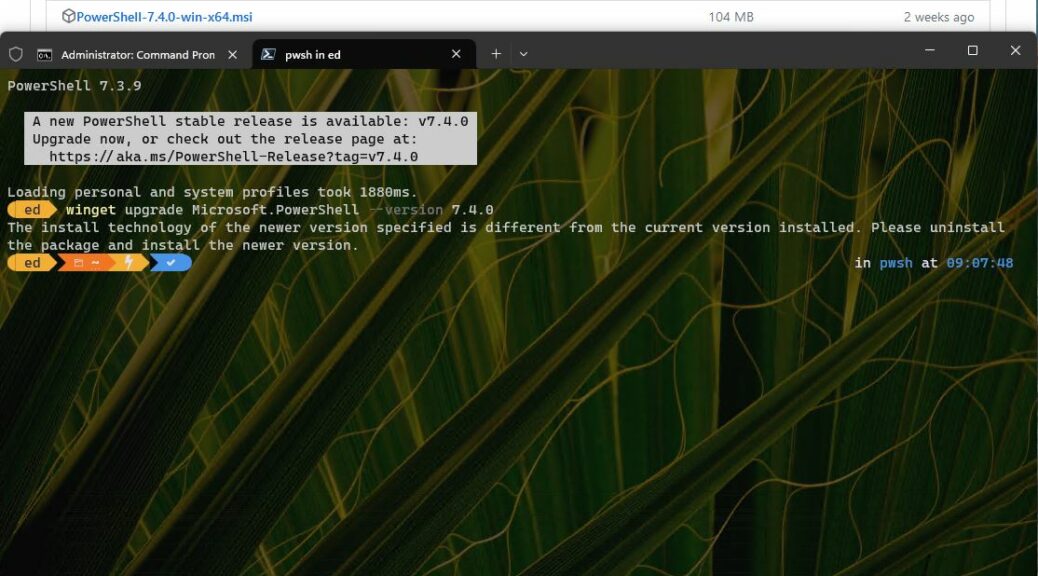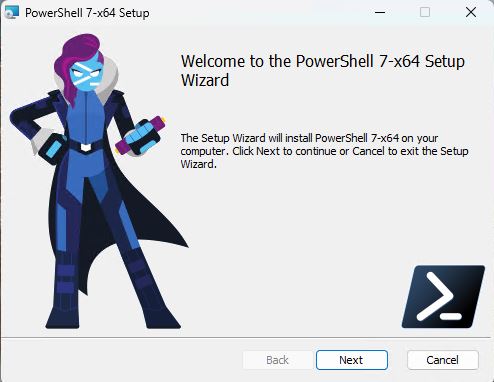If I’m reading its HTML metadata correctly, Microsoft updated its Lifecycle FAQ = Windows document yesterday (December 5). That’s when they added information about Extended Support Updates (ESUs) beyond the Windows 10 EOL date of October 14, 2025. ESU is a paid-for kind of support that allows licensees to get updates even after that cut-off date. Let’s explore what these Windows 10 Lifecycle changes could mean.
Exploring Windows 10 Lifecycle Changes
For previous versions of Windows (e.g. 7) MS offered ESUs only to MS customers with existing paid-for support or licensing agreements. If I’m reading the afore-linked FAQ’s text correctly (see lead-in graphic), ordinary users (“individual users”) will also be eligible to pay for and receive these updates. That should be interesting.
I asked Copilot this question “How much did MS charge for ESU on Windows 7?” Here’s how it answered (superscript numbers 1-3 link to the sources for this information):
According to the web search results, Microsoft charged different amounts for Extended Security Updates (ESU) for Windows 7 depending on the edition and the year of purchase. For Windows 7 Professional, the ESU prices were $50, $100, and $200 per device for the first, second, and third year respectively1. For Windows 7 Enterprise, the ESU prices were $25, $50, and $100 per device for the same period1. However, some customers could get ESU for Windows 7 for free through Windows Virtual Desktop or other support contracts23.
Given that EOL for Windows 7 was January 14, 2020, let’s factor in some inflation. That makes it exactly 5.75 years between that date and the Windows 10 EOL. Using a low-ball average inflation rate of 2.5% over that period means adjusting the foregoing numbers by 14.4% or thereabouts. That means $50 becomes $57, $100 → $114, $200 → $228. You can do the math for the rest (but I think the Professional prices are the ones to go by).
Are They Ready to Rumble?
I’m forced to speculate that MS is adding individual consumers to its upcoming ESU coverage because they believe they left money on the table during the Windows 7 extended service period. This essentially brings businesses and users who are willing to pay for coverage, but who don’t have a licensing agreement or equivalent already in place with MS. It could easily be as big a revenue stream as the covered Windows 7 population was when EOL rolls around.
Inertia is indeed a strong force in business affairs. And sometimes, smaller businesses — especially sole proprietorships — can strongly resist change. This should be interesting to watch and try to figure out. I’m not sure if I should be impressed or appalled. Stay tuned: I’ll tell you…
PS Thanks to Sergey Tkachenko at WinAero.com for bringing this to my attention. I figured out the date info on my own…
